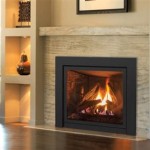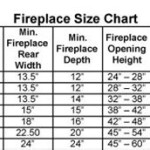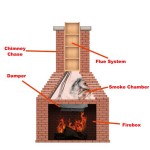Wood Burning Stove Small Fireplace: Cozy Comfort in a Compact Package
In a world increasingly dominated by technology and convenience, the allure of a crackling fire remains a timeless source of warmth and ambiance. For those seeking to embrace this traditional comfort in a smaller space, wood-burning stoves designed for small fireplaces offer a practical and stylish solution. These compact stoves provide warmth, charm, and a touch of rustic elegance to even the smallest living spaces.
Benefits of a Wood Burning Stove in a Small Fireplace
Wood burning stoves offer an array of benefits that can enhance the comfort and aesthetics of a small living space. Here are some key advantages:
1. Efficient Heat Distribution
Small wood-burning stoves are designed to maximize heat output within a limited area. With their compact size and high-efficiency combustion systems, they can effectively heat a room or even an entire small home. Many models feature adjustable air controls, allowing for precise heat regulation to maintain a comfortable temperature without excessive heat loss.
2. Ambiance and Aesthetics
The flickering flames of a wood-burning stove create an inviting and cozy atmosphere that is unmatched by any other form of heating. The rustic charm of a wood stove adds a touch of character to any living space, transforming it into a relaxing sanctuary. Modern designs offer a range of styles, from sleek and minimalist to traditional and ornate, allowing homeowners to find the perfect aesthetic complement for their fireplace.
3. Cost-Effective Heating
In a world of rising energy costs, wood-burning stoves provide a cost-effective alternative to conventional heating systems. With readily available and often locally sourced firewood, these stoves offer a more sustainable and affordable way to keep warm. Furthermore, many modern stoves boast high combustion efficiency, reducing wood consumption and maximizing heat output for optimal cost savings.
Choosing the Right Wood Burning Stove for Your Small Fireplace
Selecting the right wood-burning stove for your small fireplace involves careful consideration of several factors. Here's a comprehensive guide to help you make an informed decision:
1. Fireplace Size and Shape
The most crucial factor is the size and shape of your fireplace. Measure the width, height, and depth of the opening to ensure you choose a stove that fits seamlessly. Consider the weight of the stove and whether your fireplace can adequately support it. Some models are designed for specific types of fireplaces, such as masonry, zero-clearance, or freestanding units. Consult a fireplace professional to ensure compatibility and proper installation.
2. Heat Output
The heat output of a wood-burning stove is measured in BTUs (British Thermal Units). Determine the size of the space you wish to heat and choose a stove with a BTU rating that meets your needs. A professional can assist you in calculating the appropriate BTU output based on the size and insulation of your home.
3. Efficiency and Emissions
Modern wood-burning stoves are designed with high combustion efficiency, minimizing wood consumption and maximizing heat output. Choose a stove with a high EPA (Environmental Protection Agency) rating to ensure low emissions and minimize environmental impact. Look for features like catalytic combustors or secondary burn systems, which enhance efficiency by burning off harmful gases.
4. Aesthetics and Design
The aesthetics of your wood-burning stove are also important. Consider the style and finish that complements your fireplace and overall interior design. Choose a stove that blends seamlessly with your existing furniture and decor, creating a cohesive and inviting atmosphere.
Installation and Maintenance
Installing a wood-burning stove in a small fireplace requires professional expertise. A qualified installer can ensure proper installation, including connecting the chimney and ensuring compliance with local building codes. After installation, routine maintenance is crucial. Regularly clean the ash pan and glass door, inspect the chimney for blockage, and perform annual inspections to ensure safe and efficient operation.
With careful planning, choosing the right wood-burning stove for your small fireplace can enhance your living space with warmth, ambiance, and a touch of rustic charm. Remember to prioritize safety by consulting professionals for installation and maintenance, maximizing your enjoyment of this timeless source of heat and comfort.

The Hobbit Stove Eco Design Approved Salamander Stoves

Vogue Small Wood Burning Stoves Stovax Contemporary

Stockton 3 Wood Burning Stoves Multi Fuel

Small Wood Burning Stoves Bonfire Berkshire

Small Stoves For Household Fireplaces Archives Salamander

Comparing Wood And Propane Heat Tiny Stove

Vogue Small Wood Burning Stoves Stovax Contemporary

Small Tiny Wood Stoves By Salamander Apple Pie Saltfire And Ekol

Wood Burning Stoves For Small Houses

Freestanding Wood Stove Heart I Like It Tiny Burner
Related Posts








